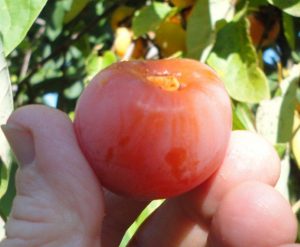- Aspects of a healthy, sustainable food system: human health and well-being, environmental health, social and cultural health, and economic health
- What local public health agencies can do to advance a healthy, sustainable food system
- The number of acres devoted to fruit and vegetable production in Iowa has decreased by more than 88% since 1929.(26,27) Out of the 50 states, Iowa ranks 42nd and 38th in vegetable and fruit production, respectively.(28)
- If Iowa farms were to produce enough fruits and vegetables for the entire population to eat the number of servings recommended per day, only about 12,300 acres would be required for This is the equivalent of just 123 acres per county– slightly less than one-fifth of a square mile.(29)
- The dollar value of Iowa agricultural products sold to Iowans for direct human consumption has decreased by almost $9 million since 1997.(51)
- Principles of Healthy Sustainable Food System– (Also found at https://www.apha.org/search-results?q=sustainable%20food%20systems)
A Vision for “Good Food” for Iowa – 2008
Highlights:
- In 1929, Iowa produced vegetables on 52,915 acres. Today, it’s less than 12,000 acres. In 1929, Iowa had 63,185 acres of fruit orchards. Today, it’s less than 3,000 acres (10).
- This disconnection with food production correlates with rising chronic disease trends and public health disparities.
- Iowa does not grow enough of the key foods for a healthy diet. If Iowans were to eat according to the Dietary Guidelines for Americans, significant acres of land would need to be converted from corn and soybean production to fruit, vegetable and dairy production (11).
- More than 675 million pounds of pesticides were applied to crops in the US in 2002 (22). Human exposure to pesticides can come through direct exposure by farmers and farm workers, residue in food (on or in fruits and vegetables or in meat such as fish and livestock), contaminated drinking water or in the air. The public health costs of pesticides are estimated to be over $1 billion per year (24).
- On average, seven tons of soil per acre is lost per year due to erosion (25). In some areas in Iowa as much as 30 tons of soil per acre is lost per year (26).
- Fresh produce purchased in Iowa has traveled an average of 1,500 miles, whereas locally-produced food travels an average of 56 miles (38).
- Iowans spend more than $8 billion in food each year, of which 90% is imported into Iowa (41).
- In 2005, Iowans consumed an average of 3.5 servings of fruits or vegetables per day, 1.5 servings less than the recommended minimum. Only 19.5% of Iowans ate five or more servings of fruits and vegetables per day (49).
- Iowans eat 25.9 million pounds of carrots each year and only 5% of these are grown in Iowa. Only 30% of the 5.8 million pounds of green beans eaten every year by Iowans come from Iowa (50).
- Two-thirds of Iowans are either overweight or obese (49). Almost a third of low-income Iowa children between two and five years of age are overweight or at-risk of being overweight (58).
- Iowa’s direct costs attributable to obesity are estimated to be more than $783 million, of which $198 million is paid by Medicaid and $165 million by Medicare (59).
- More than 11% of Iowa households do not have regular access to safe and nutritious food, and almost 4% of Iowa households were hungry or experienced very low food security (61). The economic cost of hunger in Iowa is estimated to be almost $1 billion (62).
- According to a survey conducted by the Leopold Center for Sustainable Agriculture, 69% of respondents “somewhat” or “strongly” agreed that local food is better for their personal health than food that has traveled across the country (63).
Cultivating Common Ground: Linking Health and Sustainable Agriculture by the Prevention Institute-
Action Aid Feeding the World 2050
USDA guts national organic law
Highlights:
- Outlines some of the negative impacts to the environment caused by industrial agriculture
- Speaks a lot on animal products and how their overconsumption can lead to chronic health problems
- Also speaks to the negative impacts of pesticide usage
- Then relates to sustainable agriculture and the methods used

